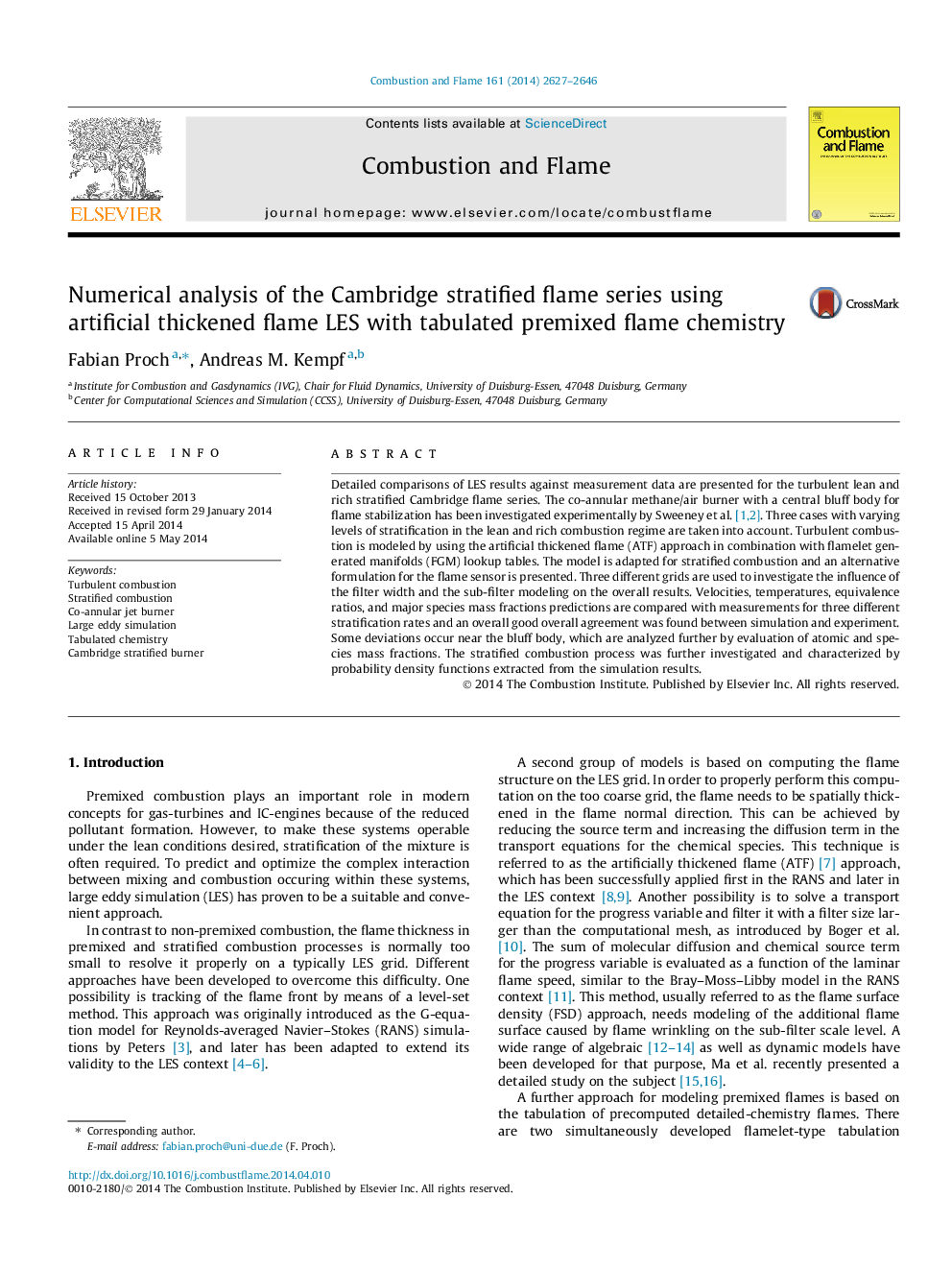| Article ID | Journal | Published Year | Pages | File Type |
|---|---|---|---|---|
| 169583 | Combustion and Flame | 2014 | 20 Pages |
Detailed comparisons of LES results against measurement data are presented for the turbulent lean and rich stratified Cambridge flame series. The co-annular methane/air burner with a central bluff body for flame stabilization has been investigated experimentally by Sweeney et al. [1] and [2]. Three cases with varying levels of stratification in the lean and rich combustion regime are taken into account. Turbulent combustion is modeled by using the artificial thickened flame (ATF) approach in combination with flamelet generated manifolds (FGM) lookup tables. The model is adapted for stratified combustion and an alternative formulation for the flame sensor is presented. Three different grids are used to investigate the influence of the filter width and the sub-filter modeling on the overall results. Velocities, temperatures, equivalence ratios, and major species mass fractions predictions are compared with measurements for three different stratification rates and an overall good overall agreement was found between simulation and experiment. Some deviations occur near the bluff body, which are analyzed further by evaluation of atomic and species mass fractions. The stratified combustion process was further investigated and characterized by probability density functions extracted from the simulation results.
